Possibly one of the most special cities in the West whose purpose is to fall in love from the first moment you cross one of its bridges, Cádiz, ancient city of Phoenician origin, Silver streets that lead to an infinite sea and a southern field that transports the visitor to the Malecón of Havana.

We recommend going out on the 9 in the morning on our routes but before leaving we have to gather strength, And what better than having a cup of hot chocolate next to the Mercado de Abastos, in the well-known cafeteria of "The poem" where we can take the delicious churros from the nearby stand "La Guapa".
To start our journey through Cadiz lands and early in the morning, We will take as a starting point the Central Market of Abastos (1), full of fresh fish and seafood stalls, fruits, vegetables, meat, where you have the possibility to try, possibly, the best pork rinds in the world and, and if that was not enough, eat some tapas in the open air in its gastronomic corner, which has a great variety of positions where we can find culinary proposals of any type and origin, from the most typical of the land to Japanese cuisine, Italian, among others. And not only that, We can also visit specialized beer stalls, infusions, beverages, etc.

We continue our journey towards the Flower Square (2) o Plaza Topete, historic heart of Cádiz and commercial center, just a few seconds from the Central Market of Abastos.
One of the main shopping streets of the city leads into it, la calle Columela, full of businesses of all kinds, especially fashion stores.
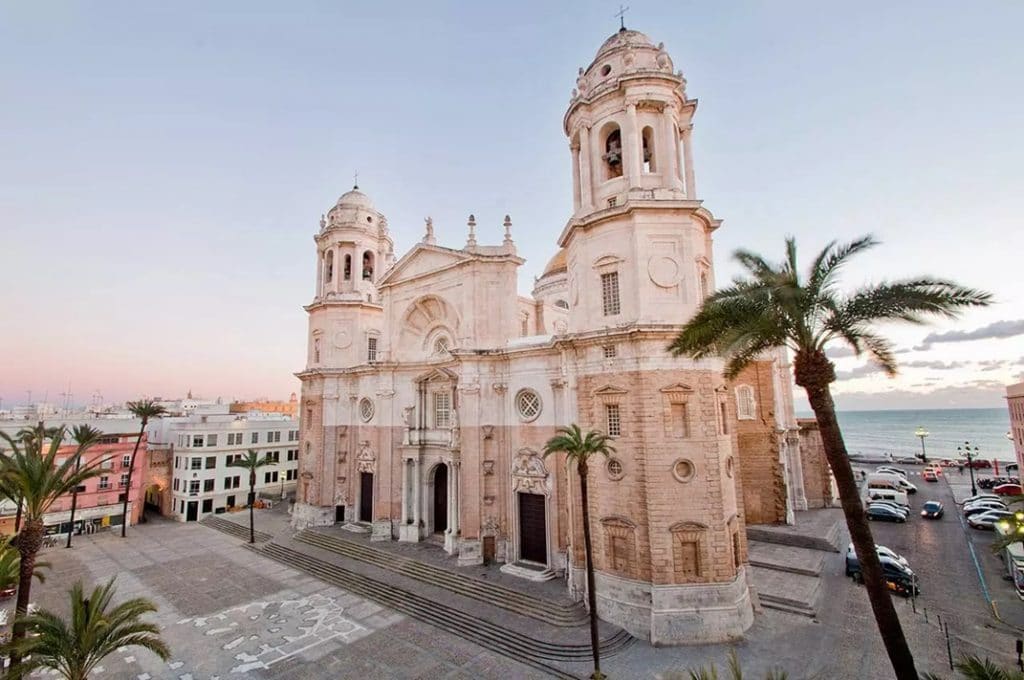
Then, we headed to the Cathedral Square (3), from which we can contemplate the immense facade of the Cádiz Cathedral (4) "Santa Cruz sobre el mar" or "Santa Cruz sobre las Aguas" is also known by the people of Cadiz as the New Cathedral., as opposed to the Old, built in the 16th century on the old Gothic Cathedral ordered to be built by Alfonso X El Sabio. The Gothic Cathedral lasted with some renovations carried out in the 15th and 16th centuries until it was burned by the Anglo-Dutch squad commanded by Admiral Howard and the Earl of Essex., who attacked, invaded and sacked Cádiz in 1.596 until he abandoned her, already burned, in the middle of July.
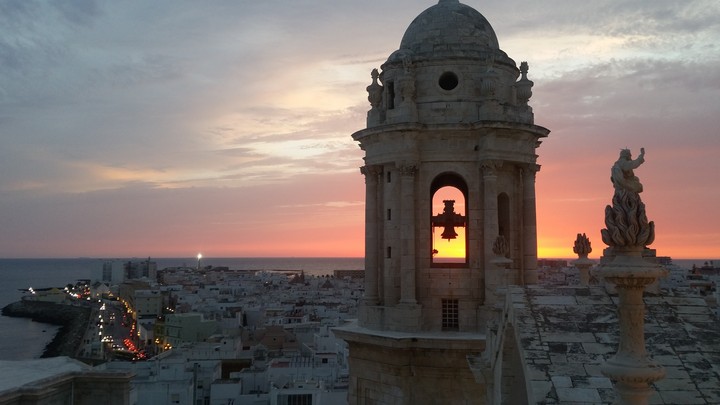
The clock tower (5) of the Cathedral of Cádiz is, for sure, one of the most characteristic exterior elements of this first Cadiz temple, from its towers you can see a complete view of the entire city and wonderful views of the Atlantic Ocean.
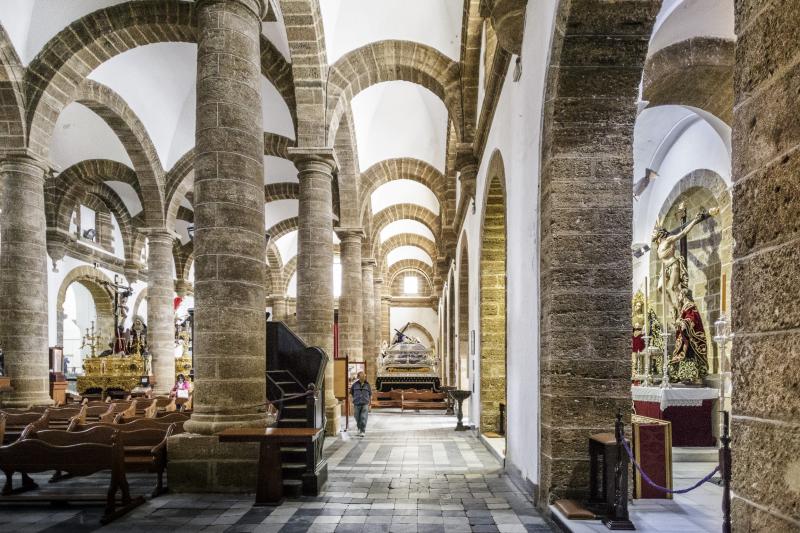
Next to the Cathedral we can visit the Church of Santa Cruz (6) or Old Cathedral It is the temple with the longest history in the city and the tradition tells that it was built on the site of an old Muslim mosque. It was built at the request of Alfonso X the Wise and was erected as a cathedral in 1263, expressing the Wise King his desire to be buried in it, although it was never fulfilled.
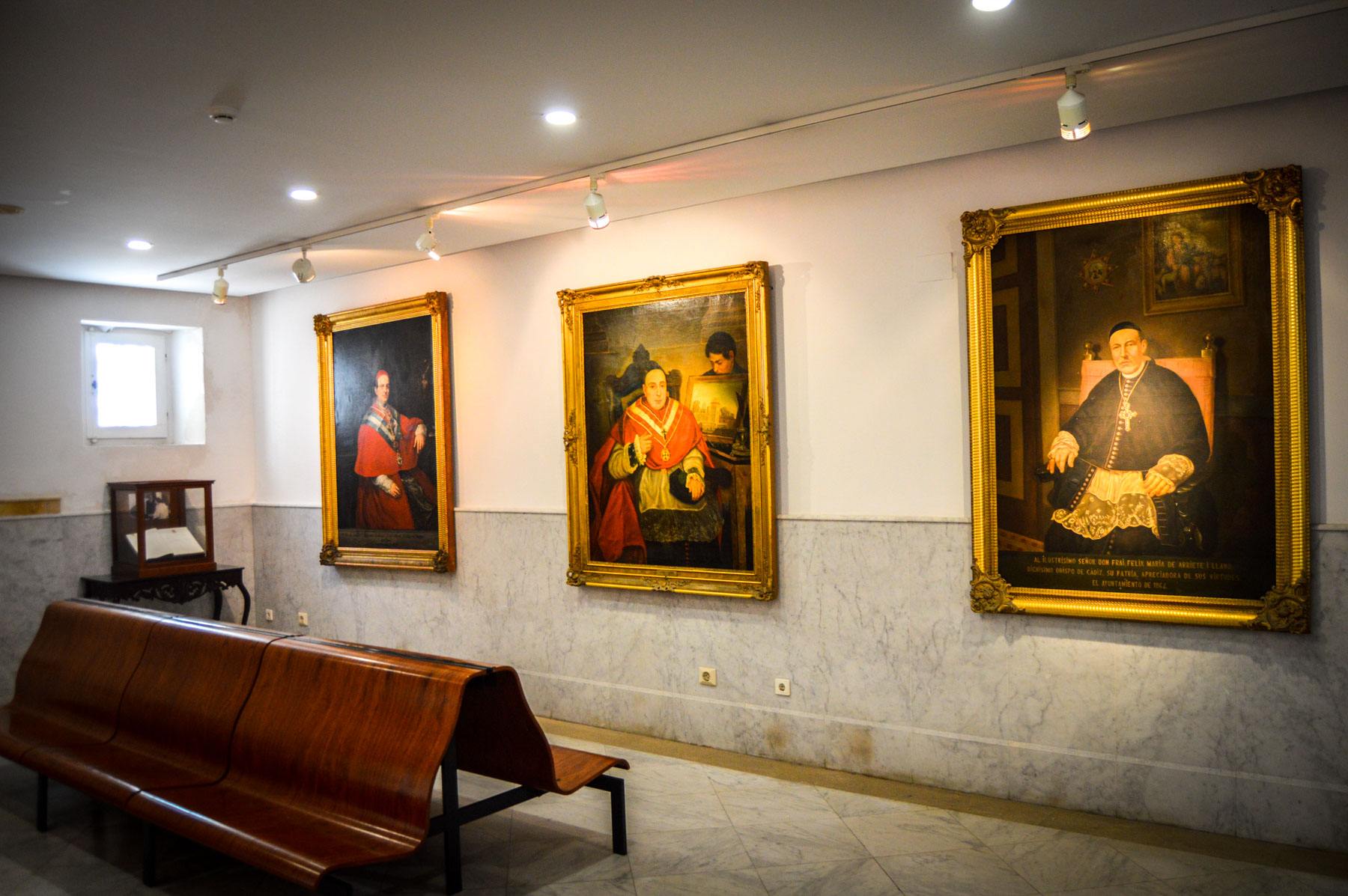
We continue around the area, where we have the possibility to visit the Cathedral Museum (7) located in the Casa de la Cortaduría. In it the ornaments and objects of worship of the Cathedral are exposed, as well as paintings and sculptures.
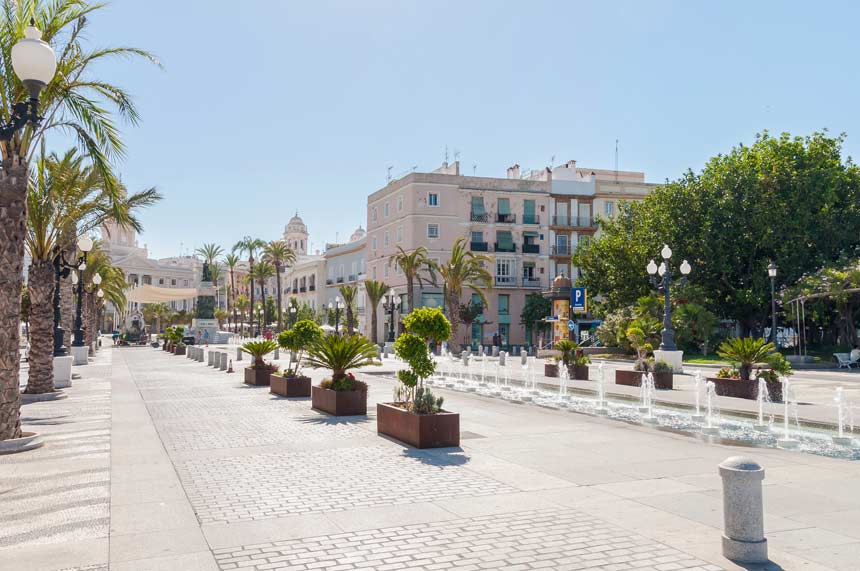
It is time to make a stop to recharge your batteries, and nothing better than tapas in Garage bistro & Bar, located just 1 minute from the Cathedral, in the neighborhood of El Pópulo, from where we can observe the rose arch, the old western gate nestled in the walls of medieval Cádiz, that connects it with the Plaza de la Catedral.
Considered the oldest in Western Europe, the Pópulo neighborhood (8), whose origin dates back to the 13th century, It is one of those places that transport you to another era with its narrow and cobbled streets with a medieval air, palaces houses and oyster stone facades that have witnessed the continuous exchange of merchandise with the New World and the visit of Christopher Columbus in 1493 on his second trip to the americas.
El Pópulo encloses in the small area delimited by three arches, each one under a Marian invocation: the Arch of the Rose, with its machicolations; the Pópulo Arch (9), located under the chapel of the same name and of which the interior curvature stands out, which is a tumid-pointed arch; and the Arch of the Whites, where was the chapel of the Virgin, vestiges of Cadiz history, from the Phoenician Cadiz, Roman and also of that rich city that looked at America mesmerized by the trade with the West Indies.

We will dedicate our last strength to visit the Cádiz city council (10) which is located in the San Juan de Dios Square.
The Cádiz City Council It is located in the current location since the 16th century. At the end of the 17th century the building was renovated, which was replaced by the current one as of 1799.
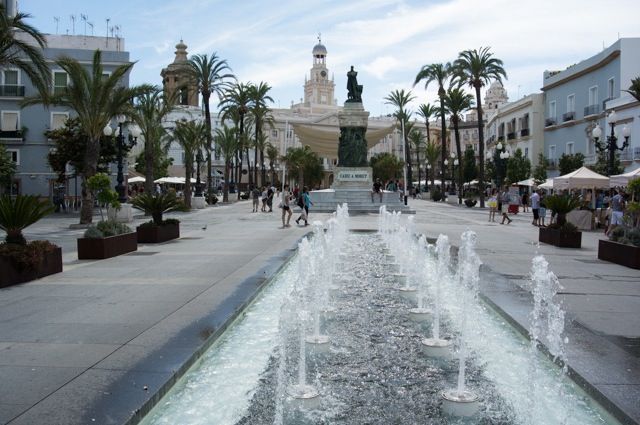
The primitive Plaza Mayor of the city o San Juan de Dios Square (11), which was also called de la Corredera, was arranged, as is common in medieval cities, outside the walls and immediately to one of the access doors, in this case the primitive Puerta del Mar, the Arch of the Pópulo. Its irregular arrangement is conditioned by coinciding with one of the mouths of the old arm of the sea, that originally crossed the current island of Cádiz.
To end the day we can go through the Las Flores Fries and Seafood Restaurant 1 where generous portions of seafood or fried fish are served on paper or on a tray, in a humble brewery located in the historic heart of Cádiz.
From its terrace we can enjoy the great atmosphere that always exists in the area, overlooking the Plaza de las Flores.

On our second day in Cádiz we will do one of the most Cadiz routes in the city, starting with the carnival neighborhood of La Viña, even so, We recommend visiting the Abastos market first to see the great variety of fish and seafood that we can find in the morning., worth to watch.
For breakfast before our walk, we have the possibility to do it within the same market, where we will find a varied gastronomic corner.
Willing to continue, we will walk in the direction Rosa Street towards the famous La Viña neighborhood (1), with a deep seafaring flavor, It is the nerve center of the Cadiz carnivals, in addition to concentrating all the essence of the call "Silver Cup", popular nickname of Cádiz.
Once we have toured every corner of the La Viña neighborhood, we will end in the La Caleta beach (2), because all its streets lead us to it.
Chaired by the former spa of Our Lady of La Palma (3), iconic image of the city of Cádiz, La Caleta is possibly one of the most special beaches on the Cadiz coast, and why not, of the world, it reflects the pure spirit of Cadiz, with magical sunsets that transmit peace and tranquility, a picturesque picture with wooden boats in a sea that is lost with a beautiful sunset between the Castle of San Sebastián and the Castle of Santa Catalina.
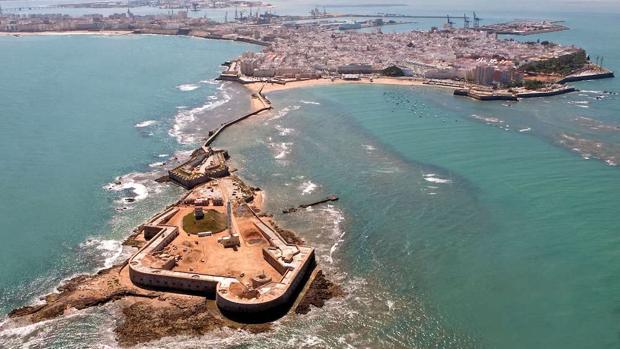
Now we head towards Duque de Nájera avenue, there we find the Castle of San Sebastián (4), which we can see to our left from the beach of La Caleta and where we can take a long walk enjoying the wonderful views of the sea that its journey offers us.
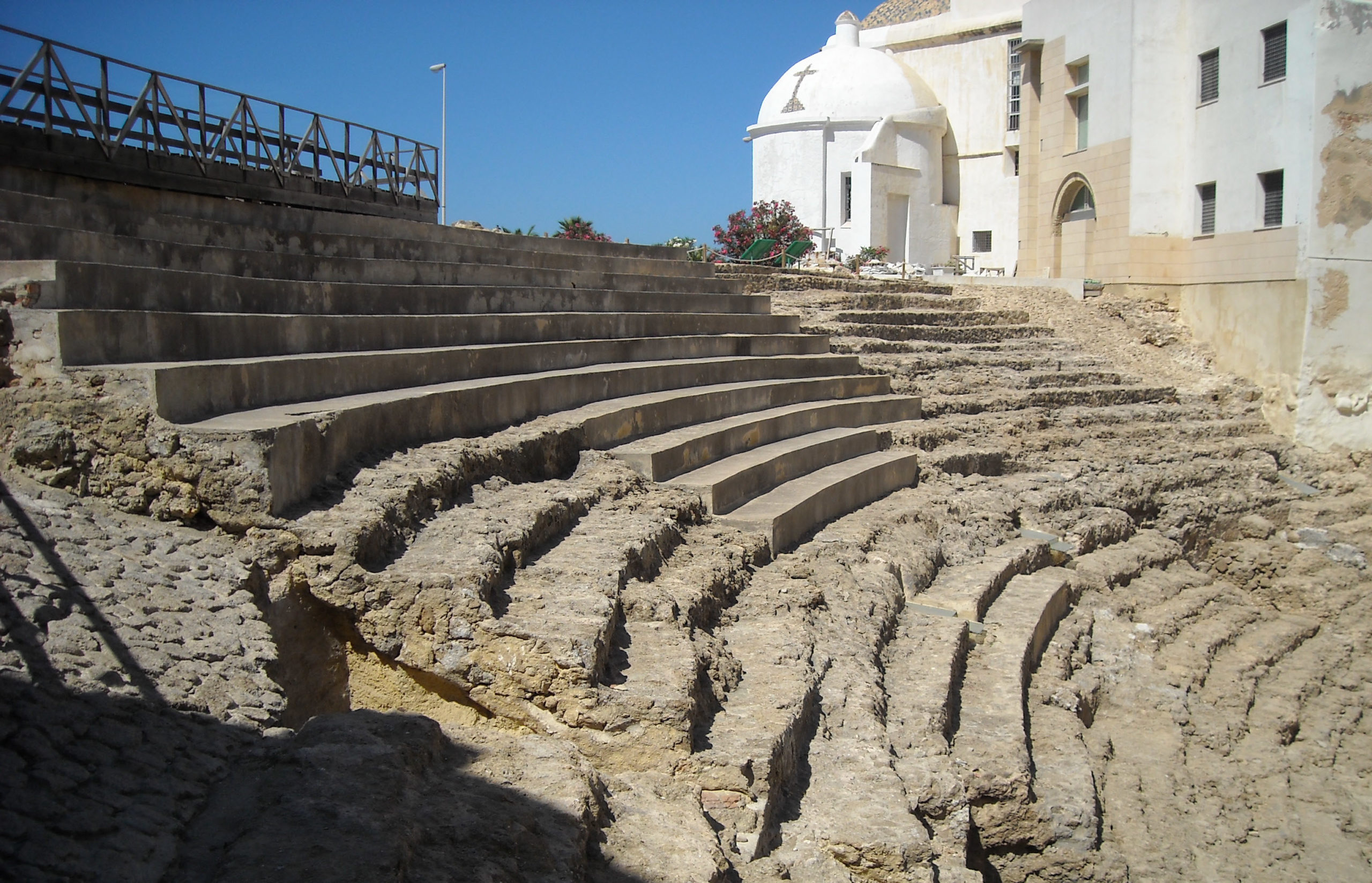
We continue our journey to Calle Mesón, where do we find the Roman theatre (5) that was built around the year 70 a.C. when Lucio Cornelio Balbo "el Mayor" from Cádiz, personal friend and advisor of Julius Caesar, decided together with his nephew Balbo "the Lesser" to expand the urban perimeter of Gades, building the Neapolis. In this new neighborhood an amphitheater and a theater were built, located the latter in 1980 under the current neighborhood of El Pópulo.
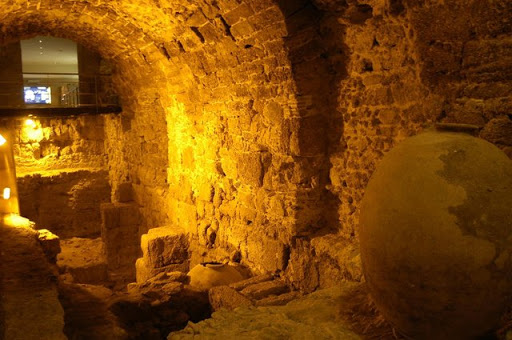
Just 1 minute is the Archaeological site of the Bishop's House (6), it is located in the historic center of the city, between the old cathedral and the new cathedral, and allows to check the evolution of the city from the 8th century BC to the 18th century of our era.

It's time to make a stop and this time we recommend visiting, without a doubt, perhaps the best known tavern in Cádiz, Manteca House, a very picturesque corner with a bullfighting decoration, old-fashioned tiles and photographs, an endearing place with exquisite typical Cádiz tapas where we highlight its chicharrones, mojama, cheeses, mackerel seasoning and all its offer in general, well you won't be disappointed.
Late afternoon, there is no better way than to relax strolling along the beach of La Caleta, address to Castle of Santa Catalina (7), where near its entrance we find a cafeteria with unparalleled views, The Keel, to have a coffee and activate before continuing.
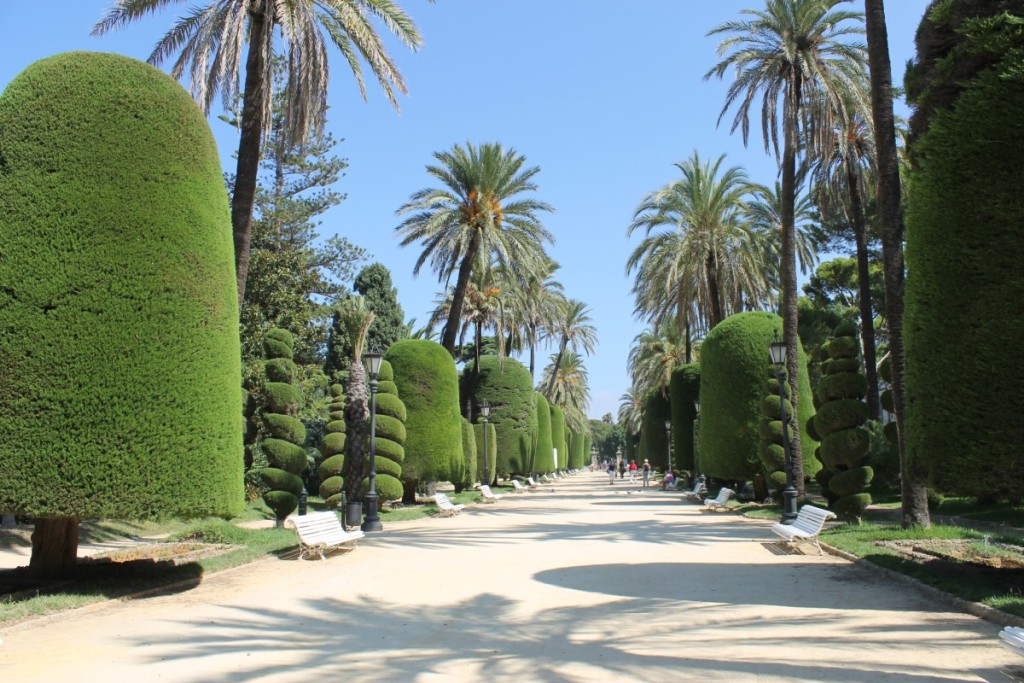
We continue our route through the Genovés park (8) or botanical garden, it is the largest green area in the old town. It remained outside the urban expansion experienced by the city throughout the 18th century, for being subjected to military servitude. At that time it was already used as a place of recreation and was known as Paseo del Perejil, because of its sparse and poor vegetation.
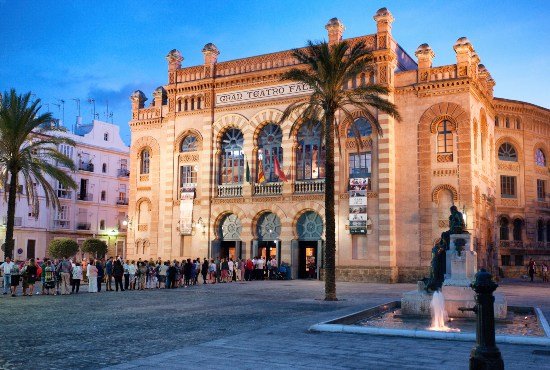
From this point, we will deviate 3 minutes of our route to go to the Cadiz carnival temple, the Falla Theater (9), that every February gives us the couplets of the groups that compete in it.

We return to the Genovés park and walk to the Baluarte of La Candelaria (10), built on a salient angle of the ground in 1672, whose strategic situation, between San Felipe and the fortifications near La Caleta, It was a great improvement for the protection of the west front.
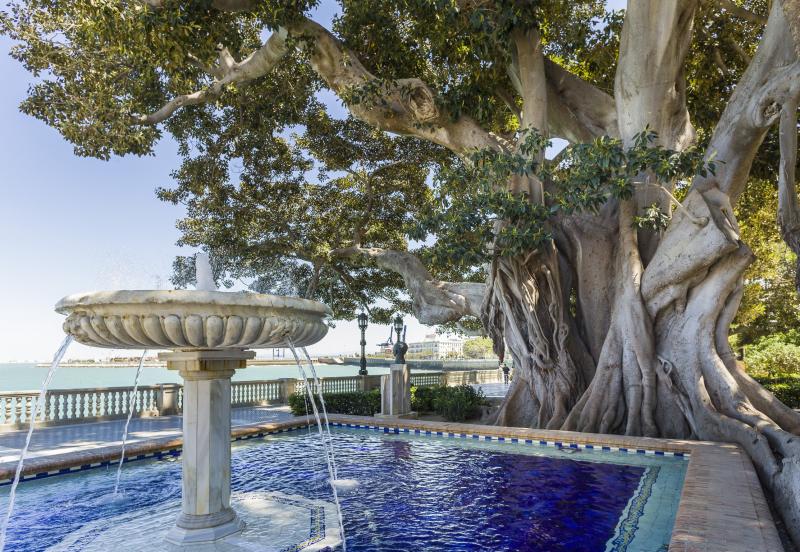
Continuing our tour we will see the Alameda Apodaca (11), this ride, reserved for the temporary, It is arranged on the walls next to the bay and is, since the seventeenth century, one of the most frequented places in the city. Throughout history it has undergone several reforms, but the one that shaped its current appearance was made in 1926.

Cádiz had to be defended at all costs. Napoleon, Nelson, Francis Drake ... I don't know how many of them took Cádiz into their heads, as a starting point to get your hands on the entire peninsula, because, centuries ago, Cádiz it was one of the most important cities in Spain.
Between bastions, lookout towers, and else, Cádiz hid behind his Walls of San Carlos (12). Today you can see them very close to the Plaza de España, there where the famous monument to the Constitution of 1812 (13), the Pepa. The ramparts stare out to sea, and they were raised at the end of the 18th century, thanks to the military engineer Antonio Hurtado.
Our day ends here but to make our trip even more perfect, in the evening we can go to dinner at the Restaurante Balandro, Well it is without a doubt, one of the best and best known in the city, where the seafood dishes made with fresh fruits from the bay of Cadiz stand out, traditional recipes rooted in the Mediterranean diet and tasty and tender meats made with a wide range of possibilities, To the client's taste.